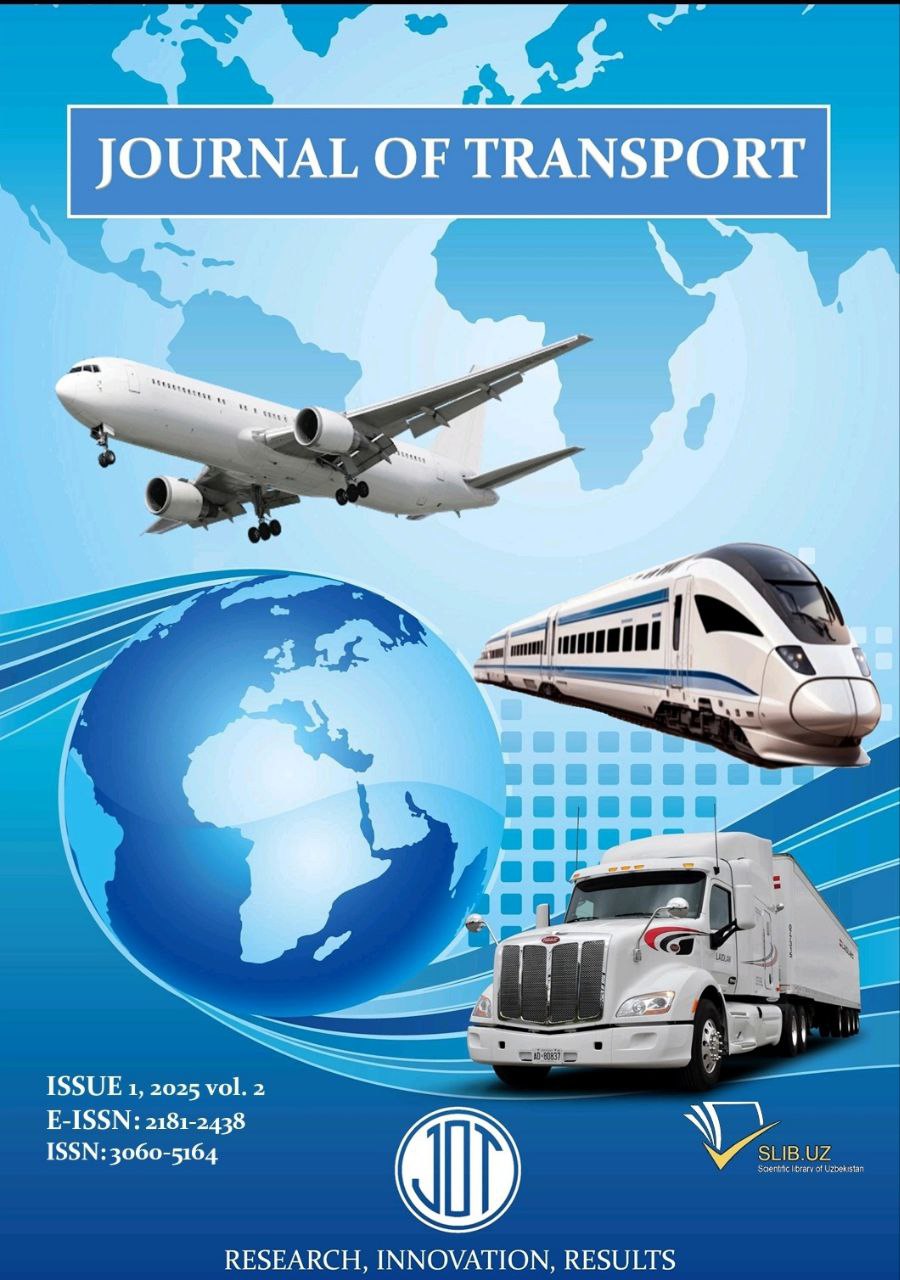Assessing the risk of public transport in southern cities of Azerbaijan using the "bow tie" method
Аннотация
Buses are an important component of the urban public transport system, meeting the daily mobility needs of the population. However, various risks arise during the operation of public transport, which can cause serious problems in terms of safety and comfort of passengers. In this study, risk factors of public transport in the southern cities of Azerbaijan were analyzed and a risk assessment was carried out using the “bow tie” method.
Литература
[2] Новикова, И. И. Управление рисками в деятельности высших учебных заведений Российской Федерации. Москва, 2008. 24 с
[3] David José Oliveira da Silva, Marcelo Hazin Alencar Bow Tie Analysis (BTA) in a Public Transport Sector During the Covid-19 Pandemic: A Case Study
[4] Julian Talbot. Risk BowTie Method. https://www.juliantalbot.com/post/risk-bow-tie-method
[5] Раимов А.И., Николаева Н.Г., Сопин В.Ф. Метод «галстук-бабочка» и его применение при оценке рисков. Компетентность / Competency (Russia). — 2020. — № 3. Doi: 10.24411/1993-8780-2020-10308
[6] Charles Cowley. Bow Ties in Risk Management. CCPS Staff Consultant, London. Energy Institute. pp 3-5
[7] Cox, L. A. (2008). What's Wrong with Risk Matrices? Risk Analysis, 28(2), 497–512. https://doi.org/10.1111/j.1539-6924.2008.01030.x
[8] Veli Deniz. Papyon analizi (Bow-tie Analysis) II. Uluslararası Proses Güvenliği Sempozyumu. 22-24 Ekim. 2015. İstanbul
[9] Chen, M. H., Hsu, C. Y., & Chen, M. H. (2019). How Transportation Service Quality DrivesPublic Attitude and Image of a Sustainable City: Satisfaction as A Mediator andInvolvement as A Moderator. Sustainability, 11(23), 6813.https://doi.org/10.3390/su11236813
[10] Lauren Redman a , Margareta Friman b,n, Tommy G ̈arling b,c , Terry Hartig, Quality attributes of public transport that attract car users: A research review, Transport Policy 25 (2013) 119–127, 20 December 2012
[11] Stewart, K.R., Mednick, M., Bockman, J., 2000. A structural Equation model of consumer satisfaction for the New York City subway system. Transp. Res. Rec. 1735, 133–137. https://doi.org/10.3141/1735-16
[12] Eboli, L., Mazzulla, G., 2007. Service Quality Attributes Affecting Customer Satisfaction for Bus Transit. J. Public Transp. 10, 21–34. https://doi.org/10.5038/2375-0901.10.3.2,24 24
[13] Eboli, L. and Mazzulla, G. (2008) ‘A stated preference experiment for measuring service quality inpublic transport’, Transportation Planning and Technology, 31(5), pp. 509–523. doi:10.1080/03081060802364471
[14] Krizek, K., & El-Geneidy, A. (2007). Segmenting Preferences and Habits of Transit Users andNon-Users. Journal of Public Transportation, 10(3), 71–94. https://doi.org/10.5038/2375-0901.10.3.5
[15] Tyrinopoulos, Y., & Antoniou, C. (2008). Public transit user satisfaction: Variability and policyimplications. Transport Policy, 15(4), 260–272.https://doi.org/10.1016/j.tranpol.2008.06.002
[16] Carreira, R. P., Patrício, L., Jorge, R. N., & Magee, C. L. (2014). Understanding the travelexperience and its impact on attitudes, emotions and loyalty towards the transportationprovider–A quantitative study with mid-distance bus trips. Transport Policy, 31, 35–46.https://doi.org/10.1016/j.tranpol.2013.11.006
[17] De Oña, J., De Oña, R., Eboli, L., & Mazzulla, G. (2013). Perceived service quality in bus transitservice: A structural equation approach. Transport Policy, 29, 219–226.https://doi.org/10.1016/j.tranpol.2013.07.001
[18] Wickham, J. Public transport systems : The sinews of european urban citithenship, Employment Research Centre, Department of Sociology, Trinity College Dublin, Dublin 2, Ireland (2004)
[19] Lam, S. Y. et al. (2004) ‘Customer value, satisfaction, loyalty, and switching costs: An illustration froma business-to-business service context’, Journal of the academy of marketing science. SagePublications, 32(3), pp. 293–311
[20] Eboli, L., & Mazzulla, G. (2010). How to Capture the Passengers’ Point of View on a TransitService through Rating and Choice Options. Transport Reviews, 30(4), 435–450.https://doi.org/10.1080/01441640903068441
[21] Akiyama, T. and Okushıma, M. (2009) ‘Analysis of Railway User Travel Behaviour Patterns ofDifferent Age Groups’, IATSS Research. International Association of Traffic and Safety Sciences,33(1), pp. 6–17. doi: 10.1016/S0386-1112(14)60232-6
[22] https://nk.gov.az/az/senedler/qerarlar/%E2%80%9Csahardaxili-harakat-(mobillik)-planinin-hazirlanmasi-qaydasi%E2%80%9Dnin-tasdiq-edilmasi-haqqinda-5907
[23] Federal Transit Administration, Sample Safety Risk Assessment Matrices for Bus Transit Agencies, september 2019
[24] Nguyen, X. L., Quach, B. K., Pham, C. T., Nguyen, T. T., & Tran, T. T. L. Analysis of service quality factors affecting passenger satisfaction with bus service based on a structural equation modeling: A case study of Ho Chi Minh City. IOP Conference Series: Materials Science and Engineering, 1289, 012056. https://doi.org/10.1088/1757-899X/1289/1/012056:contentReference[oaicite:1]{index=1}.) (2023)
[25] Redman, L., Friman, M., Gärling, T., & Hartig, T. (2013). Quality attributes of public transport that attract car users: A research review. Transport Policy, 25, 119–127. https://doi.org/10.1016/j.tranpol.2012.11.005





